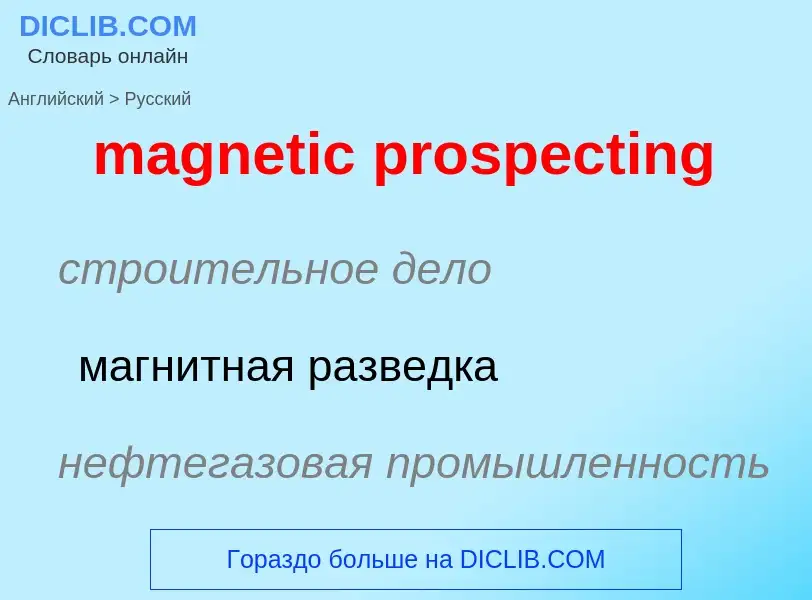Перевод и анализ слов искусственным интеллектом ChatGPT
На этой странице Вы можете получить подробный анализ слова или словосочетания, произведенный с помощью лучшей на сегодняшний день технологии искусственного интеллекта:
- как употребляется слово
- частота употребления
- используется оно чаще в устной или письменной речи
- варианты перевода слова
- примеры употребления (несколько фраз с переводом)
- этимология
magnetic prospecting - перевод на русский
строительное дело
магнитная разведка
нефтегазовая промышленность
магнитная разведка, магниторазведка
[mægnetik'disk]
вычислительная техника
магнитный диск
медицина
напряжённость магнитного поля
общая лексика
продольная запись
нефтегазовая промышленность
разведка электромагнитным методом, электромагнитная разведка
Определение
Википедия
Geobotanical prospecting refers to prospecting based on indicator plants like metallophytes and the analysis of vegetation. For example, the Viscaria Mine in Sweden was named after the plant Silene suecica (syn. Viscaria alpina) that was used by prospecters to discover the ore deposits.
A "most faithful" indicator plant is Ocimum centraliafricanum, the "copper plant" or "copper flower" formerly known as Becium homblei, found only on copper (and nickel) containing soils in central to southern Africa.
In 2015, Stephen E. Haggerty identified Pandanus candelabrum as a botanical indicator for kimberlite pipes, a source of mined diamonds.
The technique has been used in China since in the 5th century BC. People in the region noticed a connection between vegetation and the minerals located underground. There were particular plants that throve on and indicated areas rich in copper, nickel, zinc, and allegedly gold though the latter has not been confirmed. The connection arose out of an agricultural interest concerning soil compositions. While the process had been known to the Chinese region since antiquity, it was not written about and studied in the west until the 18th century in Italy.


![HP-41-series]] (from 1979) could store data via an external magnetic tape storage device on [[microcassette]]s HP-41-series]] (from 1979) could store data via an external magnetic tape storage device on [[microcassette]]s](https://commons.wikimedia.org/wiki/Special:FilePath/Digital cassette drive HP82161A connected to calculator HP-41CX.jpg?width=200)



![Rich specimen from a 2009 gold discovery by a prospector in southeastern [[Yukon Territory]]. The gold, deposited along a fracture, appears rusty-orange in this photo. Rich specimen from a 2009 gold discovery by a prospector in southeastern [[Yukon Territory]]. The gold, deposited along a fracture, appears rusty-orange in this photo.](https://commons.wikimedia.org/wiki/Special:FilePath/Yukon Gold Discovery.jpg?width=200)
